Hydrotherapy & Health

Therapeutic benefits that can be realized by hydromassage.
Hydrotherapy is based on the age old wisdom of the Greeks, Romans, and many Asian countries to treat a variety of conditions including overall health. Water, heat, and air are three of nature's most powerful agents that in combination can improve overall health, wellbeing and ease away aches and pains.
It's a natural therapy, safely used by hospitals, physiotherapists and health spas around the world. Consult with your physician to see if it can benefit you. There are several forms of hydrotherapy. The focus of this page is the therapeutic benefits that can be realized by hydromassage and hydrothermal therapy through use of AquaSpa walk-in bathtubs.
Walk-In Tub

3 Basic Factors That Comprise Aquatic Therapy

Immersion in hot water raises the body temperature and causes the blood vessels to dilate, resulting in increased circulation.
The buoyancy of the water reduces body weight by approximately 85-90%, relieving pressure on joints and muscles, while creating the relaxing sensation of floating in space.
The massaging action of a spa is created by sending a mixture of water and air through water jets or air jets. This energized warm-water stream relaxes tight muscles and stimulates the release of endorphins, the body's natural pain killers.

What Typically Happens During Hydrotherapy?

- After 5 minutes - your blood pressure and pulse rates may begin to drop.
- After 8 minutes - your circulation improves in your hands and feet making them feel warmer.
- After 12 minutes - your muscles relax, becoming more receptive to passive exercise. Tissues become more pliable and responsive to stretching, encouraging the release of lactic acid and other toxins from your system.
- At 15 minutes - your minor aches and pains will often experience a temporary decrease in severity.

For Tension and Everyday Aches & Pains

To reduce tension, a water temperature between 94º to 96º F, which is close to the skin temperature, will often produce good results. Many people have reported that a higher water temperature between 102º to 104º F is great for loosening tight, tense muscles and reducing the pain of stress-related conditions such as backache. Using temperature settings above 104ºF is not recommended as it can raise your core temperature very fast, inducing an artificial fever.
If you dare, take a cold shower after you step out of the spa, like the ancient Romans did as part of their bathing ritual. This brings an immediate rush of blood through your system, as well as an exhilarating rush of natural energy. Just as hot water opens and cleanses the pores, cool water closes them back up again afterward.
Evening is one of the best times to soak in hot water. You will probably find that a good soaking before going to bed will make falling asleep easier, and you'll likely experience deeper sleep throughout the night. If you have a medical condition or are pregnant, consult with your physician before starting any hydrotherapy regimen.

Soak Into a Good Night's Sleep
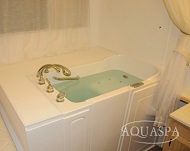
The National Sleep Foundation recently conducted a poll which showed that 38% of men, and 48% of women suffer from some form of sleep disorder, such as insomnia more than one night per week. In fact, after pain, insomnia is the second leading reason that people visit their doctors.
Researchers in this field believe that our often hectic and stress filled lifestyles are a major reason for the rise in insomnia cases. Lack of sleep can cause memory problems, shattered nerves, even mood swings and depression.
Many people have sought medication to treat sleeping problems. But did you know that you can often help your own body prepare for a deep and restful sleep? According to a report in the scientific publication Sleep, your body can be eased into a state of deep and relaxing sleep by a drop in body temperature after going to bed. Soaking in hot water about 90 minutes before bedtime triggers your internal thermostat to lower your temperature, thus inducing sleep to set in more easily.
A 15 minute soak in your hot tub before bedtime can be a natural way to achieve restful sleep without the use of drugs. Most awaken in the morning with a clear head, and none of the grogginess often associated with the use of sleeping medications or alcohol.

Can Hydrotherapy Help Relieve Arthritis?

Arthritis, which most of us understand to be an inflammation of a joint or joints, resulting in pain and swelling, is actually the name for a family of over a hundred separate diseases. These include: rheumatoid arthritis, osteoarthritis, ankylosing spondylitis, gout and lupus. By some estimates, one out of every three families has someone who suffers from this condition.
As stated in their article: Arthritis - Spas & Warm Water Exercise published by the Arthritis Foundation, "people whose arthritis symptoms respond well to heat have discovered the many benefits of heat therapy."
If you suffer from arthritis, you will need to consult with your doctor on the treatment regimen that is best for you. This is because there are several safe and effective ways to minimize loss of motion and the associated pain. Your doctor may recommend exercise, use of warm water and heat, use of cold, or other treatments. Some may be right for you, and others may not. That is why it is so important for your doctor to be involved closely in your treatment.
In a home spa, the buoyancy of its warm water hydrotherapy make it a safe, ideal environment for relieving arthritis symptoms including stiffness and the associated pain while improving the range of motion.
Warm water exercise is one method of hydrotherapy which is more gentle to joints and muscles. This is because the water supports the weight and lessens stress on them to encourage free movement. It also provides a level of resistance to assist in re-building muscle strength. Using a spa adds a third component to the therapy which is massage. A hot tub's jets release a mixture of air and warm water, relaxing and massaging your body. The Arthritis Foundation has published articles on the subject of hydrotherapy. Speak with your physician and find out if hot water exercise or hydrotherapy is right for you.

Clinical Study
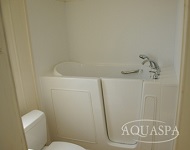
The New England Journal of Medicine reported on a study (08-16-1999) regarding the benefits of physical exercise and therapy from the use of hot tub spas. As reported, patients with Type 2 Diabetes Mellitus were studied using a hot tub 30 minutes a day, 6 days per week. After only 10 days, patients required reduced doses of insulin, lost weight, showed distinct decreases in plasma glucose and glycosylated hemoglobin, and benefited from improved sleep and an increased general sense of well-being.
The study also reported of benefits for patients who are unable to exercise. These patients would specifically benefit from increased blood flow to skeletal muscles. Once again, if you have this condition or other medical issues, you must consult with your physician prior to starting any hydrotherapy program.

Weight Loss and Cellulite Reduction

At first it may sound hard to believe, but the same study has shown that regular use of hot tubs can aid in weight loss, as well as diminish the appearance of cellulite. This stems from the fact that soaking in a spa simulates exercise by dilating blood vessels and promoting better circulation, as it relaxes the skin and muscles. It can also increase the heart rate, while lowering blood pressure. This seems to indicate that soaking in a hot tub may be good for your body in many ways.
As previously mentioned, the study was for diabetes research, but the results showed that the weight of the subjects was reduced by an average of nearly four pounds each.
Regular use of hydrotherapy may also help to diminish the appearance of cellulite. These fatty deposits that typically gather on the hips, thighs, and buttocks of most women past their 30s can never be fully eliminated. The design of a woman's body naturally causes the skin to dimple out, whether she is overweight or thin.
By improving circulation to the areas affected by cellulite, the appearance of the unsightly deposits can be reduced. Hydrotherapy stimulates blood vessels and increases circulation. It also tones the body tissue, reduces fluid retention, and relieves swelling. All of these benefits combined can result in the reduction of the appearance of cellulite.

Back Pain
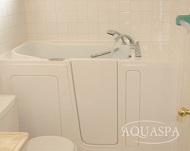
Ask anyone who owns one: they will tell you that they feel better after using their spa. For hundreds of years Europeans have used hot water spa therapy as a treatment for various chronic diseases. In fact, the Romans developed a fabulous hot springs resort in Bath, England sometime after their invasion in 43 A.D.
The effectiveness of such therapy for chronic low back pain has not been well documented until recently. In 1995, a study published in the British Journal of Rheumatology reported that spa therapy has both short and long-term benefits in treating lower back pain.
A later French study, published in the Journal of Rheumatology by another group of researchers, sought to quantify the overall benefits of hot water spa therapy. It appears to confirm these results. After three weeks of consistent hydrotherapy, examinations showed more improvement in the health status (as measured in pain duration and intensity and back flexibility) of the spa treatment group than in the medication-only group. After six months, significant improvement continued in the spa therapy group. In addition, their use of analgesics and anti-inflammatory drugs had decreased.

Cardiovascular Health

The Mayo Clinic found in a recent study that since bathing in your hot tub simulates exercise, soaking in one gives you some of the same health benefits of exercise but with less heart stress. A hot tub increases the heart rate while lowering blood pressure, instead of raising it as other forms of exercise do.
In the article Mayo Clinic OK's Spas for Heart Patients it states that spas may not pose as much risk to heart patients as previously had been thought. The report stated that relaxing in a spa might actually be less stressful to your heart than working out on an exercise bicycle.
The research examined the body temperature and cardiovascular stress experienced by 15 patients at risk for heart disease both in hot water and on bicycles. The studies showed that exercise caused blood pressure to rise from an average of 121/73 to 170/84. In contrast, sitting in a spa made the blood pressure drop from an average of 117/77 to 106/61.
The article goes on to state that in a hot water, the heart naturally beats faster and heart disease patients want to know if the stress placed on the heart is too great. If you suffer from heart disease, consult with your physician first to see if hot tub bathing is appropriate for your condition.

Benefits for Athletes
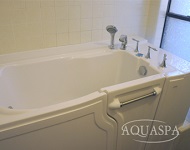
Professional sports teams have long known the value of hydrotherapy, but weekend athletes can use the same therapy to aid in relieving minor aches and pains and sore muscles. Neck and back pain, sports injuries, muscle pulls, spasms and soreness are often eased simply by a soak in the spa.
It is also good preventative medicine. Since skin and muscles loosen and relax from the increased blood circulation, improvement in athletic performance can bee seen by using your hot tub both before and after you exercise.
Prior to athletic activity, soaking relaxes and loosens muscles, and can reduce the risk of injury while improving overall performance.
After physical exercise of any kind, hot soaking helps you relax your muscles and wind back down. It can also significantly reduce next-day muscle stiffness.
Note: If you have a sports injury, consult with your physician before using a hydrotherapy. It is often necessary to treat swollen areas with cold first. You doctor will likely advise you to avoid hot water until swelling of an injury has subsided. When the swelling is gone, the massaging action of warm water circulation will generally help speed the healing process.

Tax Deductions & Insurance Benefits
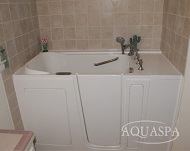
If your doctor or other health professionals advise you to follow a regular program of warm water exercises, and if the need for this medical treatment is your primary reason for buying a home spa, all or a part of your purchase price may qualify for income tax deduction as a medical expense in certain circumstances.
In its opinion letter Index No.: 213.05-00, the IRS states " Section 213(a) allows as a [tax] deduction the expenses paid during the taxable year for medical care of the taxpayer, spouse, or dependent. Under § 213(d)(1)(A), an expense is for 'medical care' if its primary purpose is the diagnosis, cure, mitigation, treatment, or prevention of disease. Since a spa is of a personal nature, you must establish that it is primarilyfor the cure, mitigation, treatment, or prevention of disease before you can deduct the cost on your tax return. You may be able to claim it as a tax deduction even though you also derive pleasure from it and even though someone else such as your spouse makes use of it, as long as you are buying the hot tub primarily to relieve pain due to disease or an injury. A prescription from your doctor for the hot tub will help in establishing this.
Note: This is not tax advice. Your accountant can inform you as to the specific tax rules and give you professional advice as to whether your purchase will qualify for a deduction or not, as well as what documentation you will need.
Some medical insurance plans may also cover all or part of the purchase expense of a spa prescribed by your physician as a medical treatment. Consult with your insurance provider to see if they offer this coverage and to see if you are eligible. Note that if your insurance company pays for the hot tub, you many not also deduct its expense on your income tax return.
Caution: If you are pregnant, have high blood pressure, heart disease, diabetes, or any other medical condition, you must consult with your physician before beginning any hot water therapy program. Your doctor can help determine if it's right for you. Infants and children are more sensitive to the effects of heat, and experts recommend shorter soaking times. Consult your pediatrician.













